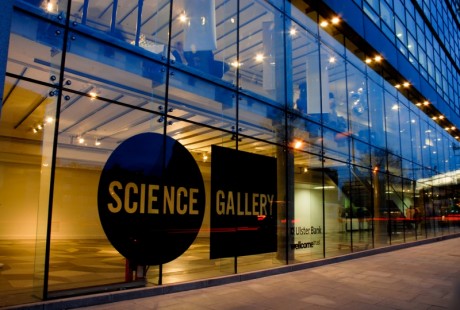
This year has brought some unprecedented challenges that have required some outside-the-box thinking. For those at Science Gallery Dublin, innovative and collaborative research is nothing new, however. The University Times recently spoke to Aisling Murray, head of programming at the Science Gallery, and Mairéad Hurley, its head of research and learning, about the pros and cons of interdisciplinarity in art and science.
According to Murray, we are “moving towards being post-discipline”. She speaks about people self-identifying as either an art or science person from a very young age, which, in her view, is a poor approach. “There’s so much in common with the two. Like, are you curious? Do you have a great imagination? These are both traits of people that are interested in art and in science.”
Murray also emphasises that some of the greatest projects have resulted from alliances of critical inquiry and curiosity. For Hurley, both science and art “search for knowledge that can be both personal but also for the greater good”. Yet, she highlights that the “learned ways of being in the art world and in the science world” can differentiate substantially.
“With art, when the idea exists, in a way the artwork exists, but with science, when the idea exists, the inquiry has to follow”, Murray sets out.
“There’s so much in common with the two. Are you curious? Do you have a great imagination? These are both traits of people that are interested in art and in science.”
While abstract debates and definitions are certainly appealing, what counts is real-world collaboration, especially during times of crises when practical implementation is needed. “We would always say that we’re not experts in anything except creating compelling visitor experiences”, Murray humbly explains in regards to the Science Gallery.
A key interest for the Science Gallery is to bring in a melting pot of people: “Bringing together artists, designers, researchers, early career academics, professors, scientists, policymakers – bringing in the general public. Just putting a real mix of people in a room together and seeing what ideas come out of that.” The gallery operates on the idea that co-creation signifies the mutual pursuit of inquiry between the artist and scientist. Hurley believes that building on transversal skills like empathy or communication is critical to foster an understanding of complex content.
Both agree that a serious risk when mixing art and science is instrumentalising one in the service of the other. One example Hurley mentions, is the new term “STEAM”, which adds an “A” for art to the conventional term STEM. “A lot of times art is having an issue with that because it almost trivialises the practice of art and the deep meaning of it”, she affirms. She then takes a critical look at the idea of science being framed as palatable, only when presented alongside pretty visualisations or interactive activities, like colouring for children. This, she explains, can “take away from the wonder of science”. Furthermore, Murray adds that disparities in funding for art and science can present further obstacles.
“Scientific fact, data and evidence is now very central to news and to the media and is informing a lot of people’s behaviours.”
Reminded by the Science Gallery’s current exhibition, INVISIBLE, I ask which they consider more visible to society – art or scientific findings. They both quickly assert that scientific research has dominated public conversations over the last few months. Hurley elaborates: “Scientific fact, data and evidence is simultaneously now very central to news and to the media and is informing a lot of people’s behaviours.” Still, she identifies an increasing rise in the mistrust of expert opinions, which is why she regards it as their responsibility to facilitate discourse and provide scientific evidence to as many people as possible. Referencing the success of Normal People, Murray highlights a newfound appreciation for the arts, with people “consuming more music, reading more books” of late. Society seems to realise the benefits of art for mental health and well-being in particular, Hurley points out.
Returning to more abstract territory, we conclude with the philosophical question: Which perspective, art or science, might come closer to explaining what it means to be human in this world? Reinforcing that we need both, Murray illustrates: “Science has the ability to show us new things in the world and explain new things and art has the ability to enable us to understand them more and understand our place in this.”
As we start to feel the limitations of words in appropriately expressing these abstract thoughts, I realise that this might be it. Perhaps neither art nor science, whether in singularity or in collaboration, are about using one to make the other “better” or reaching any particular goal. Perhaps both perspectives simply inspire us to explore the larger questions of our existence.






